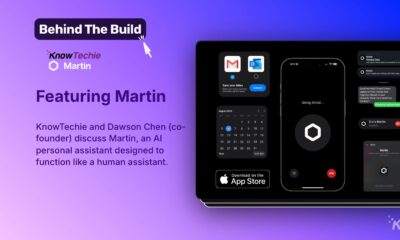News
Feeling is believing: discover the magic of haptic feedback in tech
Here’s how haptic feedback has been revolutionizing our experience with technology.

Just a heads up, if you buy something through our links, we may get a small share of the sale. It’s one of the ways we keep the lights on here. Click here for more.
The average consumer technology experience is usually one-size-fits-all — but haptic feedback is upping the game. This revolutionary tech completely transforms how people use their devices and interact digitally.
Whether that’s on an iPhone keyboard or in VR, haptics provide valuable feedback to the user to aid with immersion or UI challenges.
Here’s how it works and what users can expect when using it.
What is haptic feedback?
Haptic feedback is a technology that uses different sensations to simulate physical interactions. It can go in everything from a wearable vest to a joystick.
Most companies use it in apps and virtual reality (VR) games, but it can do so much more than that.
Although this tech sounds futuristic, it’s been around for decades — and not just in the research and development way. It’s been a part of everyday technology for years.
For instance, Google added haptic feedback to its keyboard in 2019. You’ve probably used it before without realizing it.
How does haptic feedback work?

Haptic feedback technology can use sensors, motors, speakers, electrodes, and actuators to simulate physical sensations. The exact combination changes depending on the kind of device you use.
Here are the different types of haptic feedback:
- Temperature: Actuators use your body’s temperature to heat up or cool down in specific spots. Imagine VR with this kind of tech — you could feel the chill of space or the warmth of a flaming sword.
- Pressure: A device uses sensors and expanding cushioning to make you feel force. For example, Meta’s haptic gloves use multiple inflatable pressure pads to simulate the sensation of physical touch in VR.
- Sound: Wearables — like vests and gloves — can use speakers or actuators to make you feel like you’re standing in the front row of a concert. Devices with screens simply play a sound when you rotate or touch something.
- Vibration: Miniature motors or actuators shake quickly to produce vibrations. This type of haptic feedback is the most common since phones and tablets can already vibrate.
- Electricity: Small electrodes send tiny electric pulses, making your nerve endings experience pain or physical contact.
While some tech only has one kind of haptic feedback, others use both. It depends on what you plan to use the device for.
After all, although your phone can technically heat up after too many hours of scrolling, making it change temperature is pointless.
How does haptic feedback transform experiences?

Every once in a while, the world gets a new, transformative invention that changes how people interact with technology. Haptic feedback is one of those — and it revolutionizes the consumer experience in more ways than one.
Improves attention
Considering over 50% of Generation Z spends more than 10 hours using electronics daily, a good chunk of the population has a nonexistent attention span.
Fortunately for them, haptic feedback uses sensory stimulation to trigger a mental response. It can keep them focused and make experiences with technology more memorable.
Transforms accessibility
People with visual or auditory disabilities have a much easier time when they can feel their devices physically respond to them. This kind of tech opens the door for new assistive gadgets and transforms how people digitally interact.
Increases engagement
Consumer technology is much more immersive when you can engage all your senses at once — flying a drone or playing your favorite video game become life-changing experiences.
Enhances usability
Haptic feedback improves the consumer experience by making the user interface more intuitive and responsive. It’s a helpful tool, even if you don’t notice it directly.
Imagine how annoying it would be if confirmation buttons didn’t respond when pressed. A small sound or vibration lets you know your device registered your input.
Heightens perception
One study found people who used a touch screen were more likely to notice their surroundings than those who used a mouse and keyboard — their entire perception changed because of the kind of tech they used.
Since haptic feedback introduces a whole extra level of immersion, there’s no telling how much it could heighten awareness and focus.
Provides personalization
Consumer technology is a one-size-fits-all sector because it relies on mass production. Luckily, haptic feedback is here to save the day.
It can personalize every interaction you have, whether exploring VR or flying a drone. Every experience is unique when you engage all your senses.
Haptic feedback is revolutionary

Haptic feedback can be utterly transformative for everything from smartwatches to kitchen appliances. After all, this tech is the closest the world’s gotten to a fully immersive, lifelike technological experience.
Have any thoughts on this? Drop us a line below in the comments, or carry the discussion to our Twitter or Facebook.
Editors’ Recommendations:
- How to enable haptic feedback on your iPhone keyboard
- HP’s new Chromebook is the first to feature haptic feedback on the trackpad
- Meta announces new $499 Quest 3 VR headset – preorders open now
- PlayStation’s new VR controllers will feature adaptive triggers and haptic feedback
































